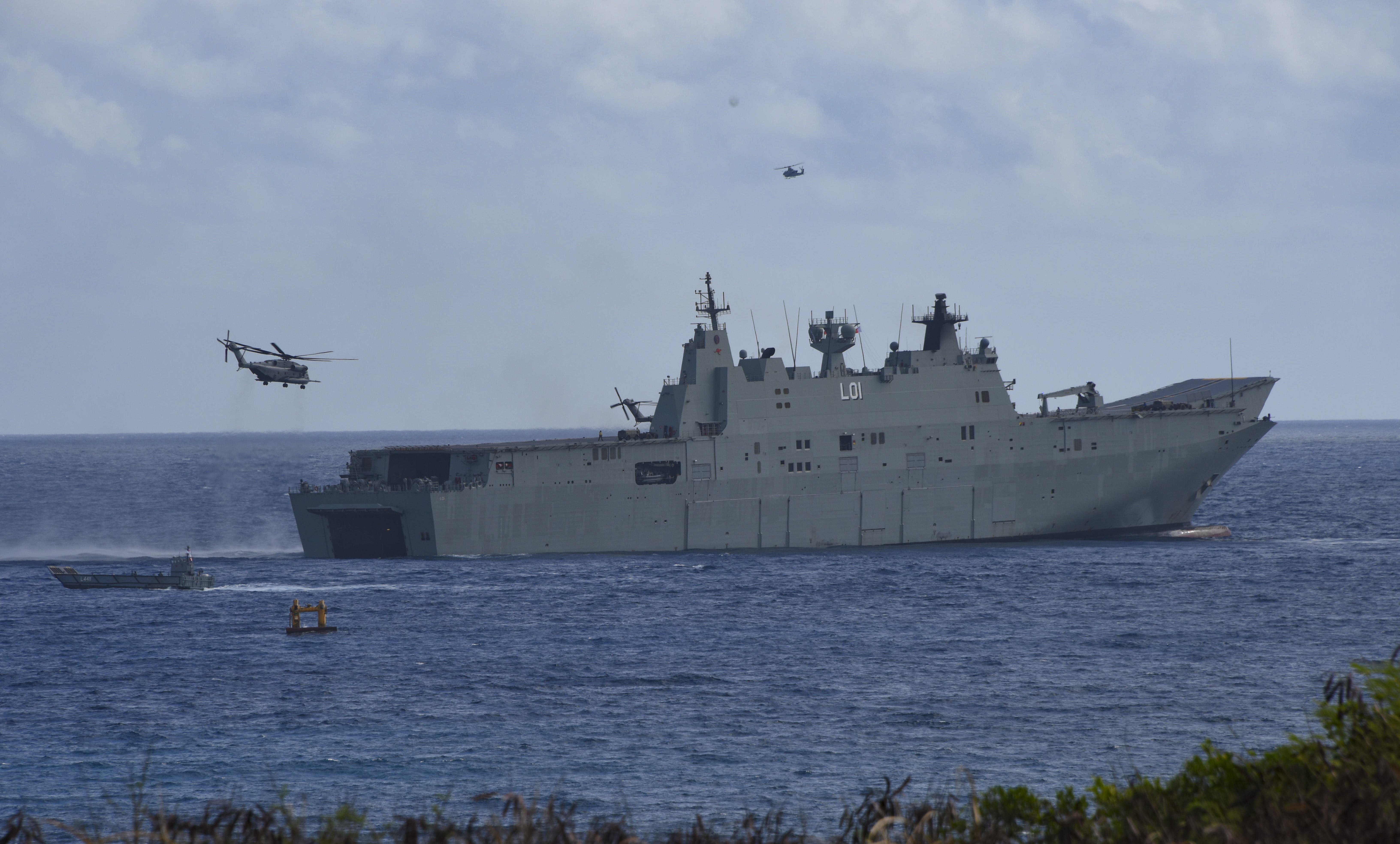
ABOARD HMAS ADELAIDE, OFF THE COAST OF HAWAII – Australia’s amphibious force was a breakout star of the Rim of the Pacific 2018 exercise, being thrust into visible leadership role when the U.S. Navy’s amphibious assault ship suffered mechanical failures and remained pierside for most of the at-sea exercise.
The unplanned spotlight, though, put on international display the progress the young amphibious force has made since a 2011 decision by the Australian Defence Force to build up a three-ship Amphibious Ready Group and an accompanying amphibious battalion in the Army.
As landing helicopter dock (LHD) HMAS Adelaide (L01) led the flow of troops from ship to shore and back again in surface connectors and helicopters, it was clear how the Australian amphibious capability had grown more capable and confident even since the 2016 RIMPAC exercise, when sister ship HMAS Canberra (L02) made its first major international debut and the Army’s 2nd Battalion, Royal Australian Regiment (2RAR) was charting a path forward for its transition from infantry to amphibious pre-landing force.
Now firmly in the “run” phase of its crawl/walk/run evolution, Australian amphibious force leaders say RIMPAC 2018 served as a nice challenge ahead of next year’s final test of the amphibious force: operating a three-ship ARG and accompanying ground force in the Talisman Saber 2019 exercise back at home.
Recent Amphibious Activities
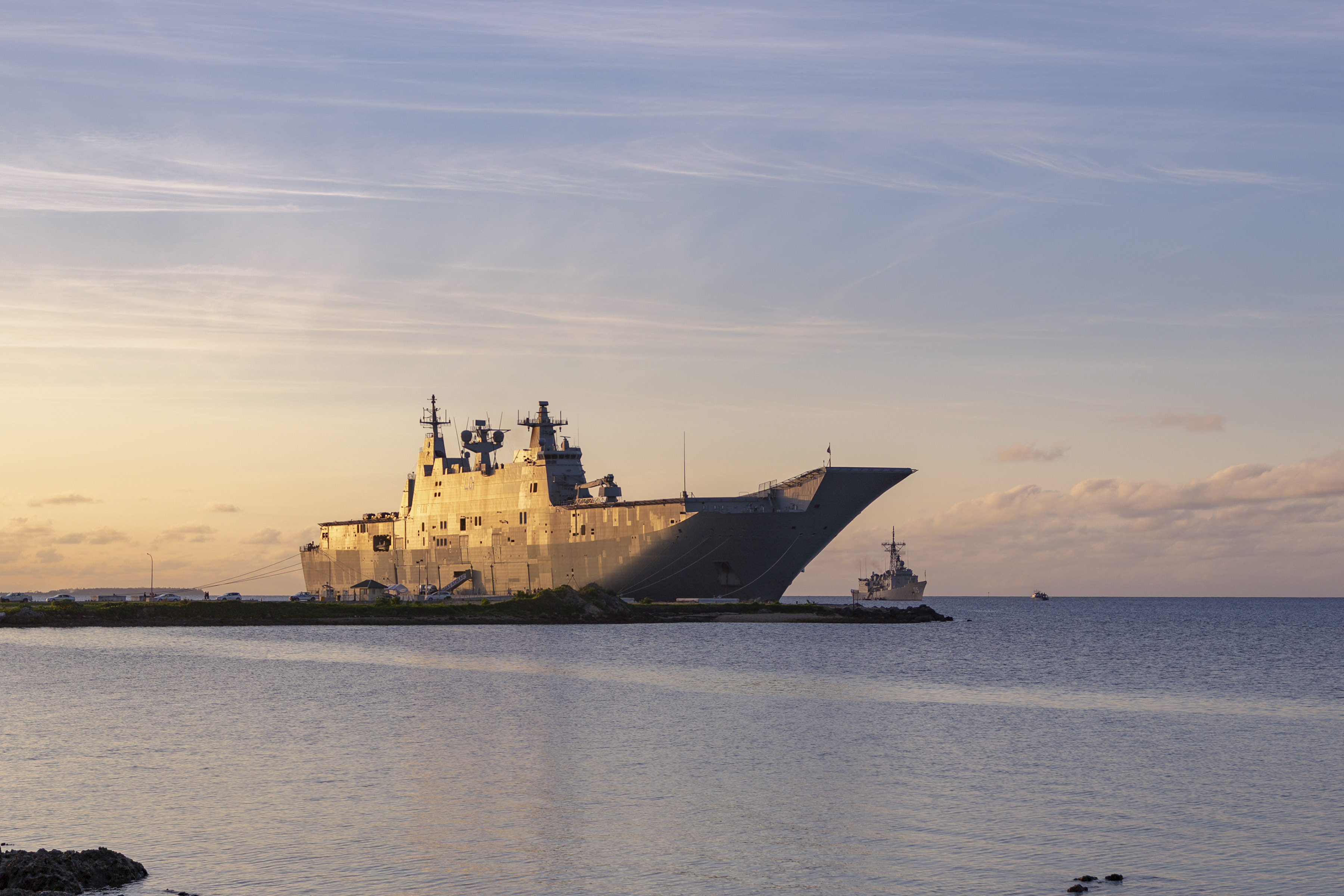
Already the Australian Defence Force’s amphibious force has proven itself on an international stage. After success at 2016 RIMPAC, the ADF took on an inaugural Indo-Pacific Endeavour deployment last year.
“Indo-Pacific Endeavor is our principle vehicle for international engagement and regional engagement from a military-to-military point of view, and also to support Australian … diplomatic efforts overseas and Australian interests overseas,” Capt. Jon Earley, commanding officer of HMAS Adelaide (L01), told USNI News on July 22, while underway in Hawaii for the RIMPAC 2018 exercise.
“Adelaide led IPE 17 last year; the focus was Southeast Asia and Northeast Asia, and that was a six-ship task group” that, while both aggregated as a task group and then disaggregated into smaller groups, visited 13 countries and worked with 15 militaries in the region.
This year, Adelaide is participating in RIMPAC 2018 as an intermission to its IPE 18 event in the Southwest Pacific. The amphib and its escorts visited Fiji, Tonga, Samoa and Vanuatu on the way to Hawaii, and will visit the Solomon Islands and possibly Papua New Guinea on the way back home.
“The main driver there was for Australia to promote stability and security in the region, achieved through bilateral and multilateral training and also capacity-building,” Earley said.
“When you look at the Southwest Pacific, one of the major things that’s happened there, one of the biggest threats we face is obviously environmental disasters. Cyclones, typhoons, hurricanes, whatever you want to call them; tsunamis; earthquakes; volcanoes, which seems to be the flavor of the month over here in Hawaii – are happening with increasing frequency. … A lot of these small countries here in the Southwest Pacific, they’re nations in their own right, and clearly they’re smaller: small [gross domestic products], their defense forces are small, they’re very specialized – they may be for fisheries patrol, or basic military services ashore. … So if something big hits them, they might not have the capacity to [respond]. So by us coming along and saying, look we’ve got one of these things, how about you come onboard and see how it works, and if something happens and your government requests it and the Australian government says yes, you know what it’s like, you know what to expect, you can plug and play and we can provide the assistance very very quickly.”
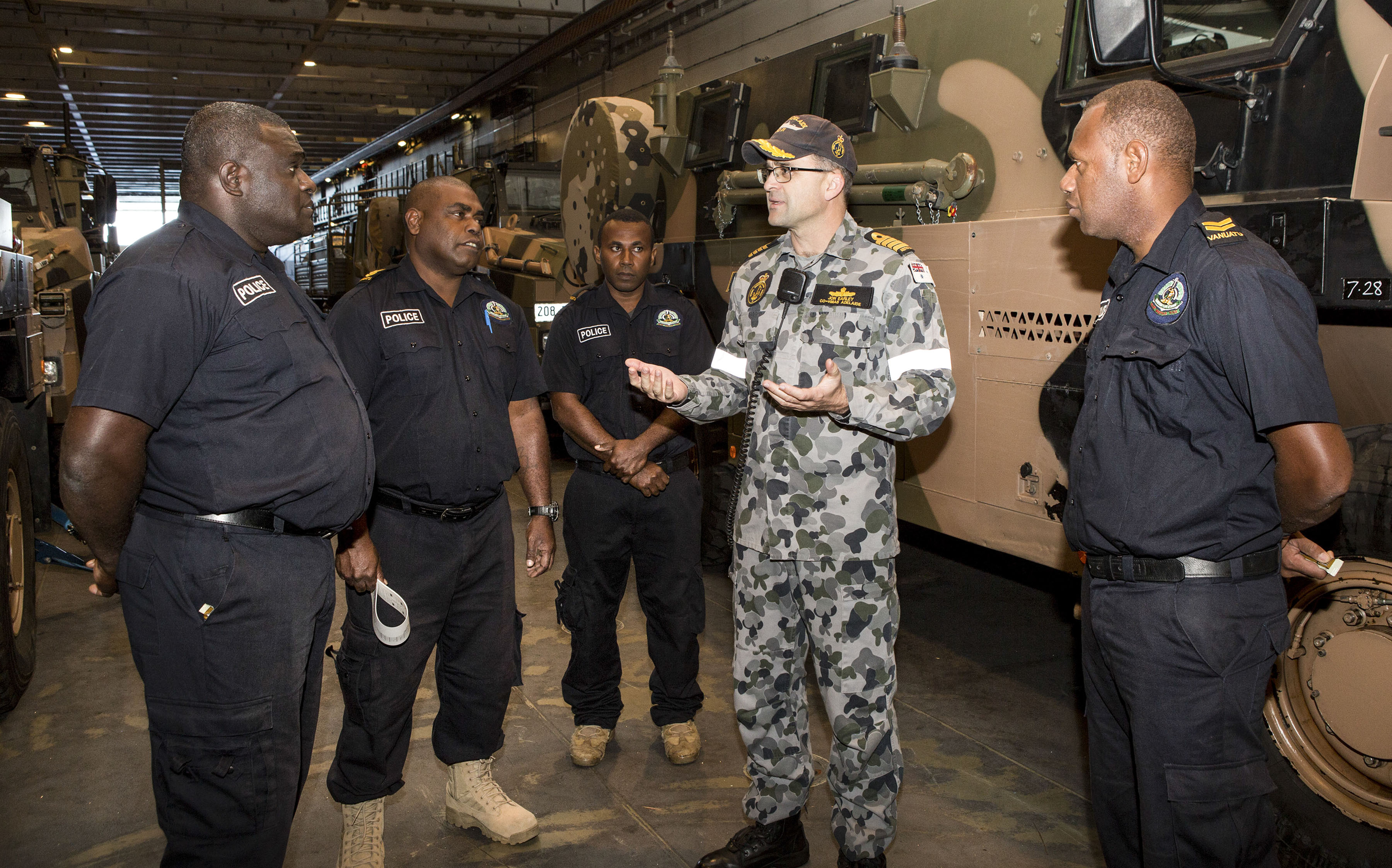
Though most of the focus is on humanitarian assistance and disaster relief capabilities, the Australians, like the U.S. military, are also looking to support their interests overseas, and in particular in the South China Sea.
“We have an interest there. We support international world order, rules-based organizations. We expect people to respect the ocean, look after the ocean, make sure it’s not used for the wrong purposes – like any navy would. So we do have an interest going up there,” Earley said.
“We do respect the Law of the Sea, and we will continue to go up there. Part of our foreign affairs engagement involves military-to-military relationships, and navies go in ships, and ships need to go places, and they go in the ocean.”
Earley made clear that Adelaide had only professional interactions with the People’s Liberation Army Navy (PLAN) while in the South China Sea – waters that the Royal Australian Navy have patrolled for decades – with Chinese ships tailing them at times but also with plenty of positive radio communication to ensure all ships were aware of each other and operating safely in close proximity.
Earley said these operations far from home would never rival what the U.S. Marine Corps is able to do in terms of scale, but he did say international leaders were taking notice.
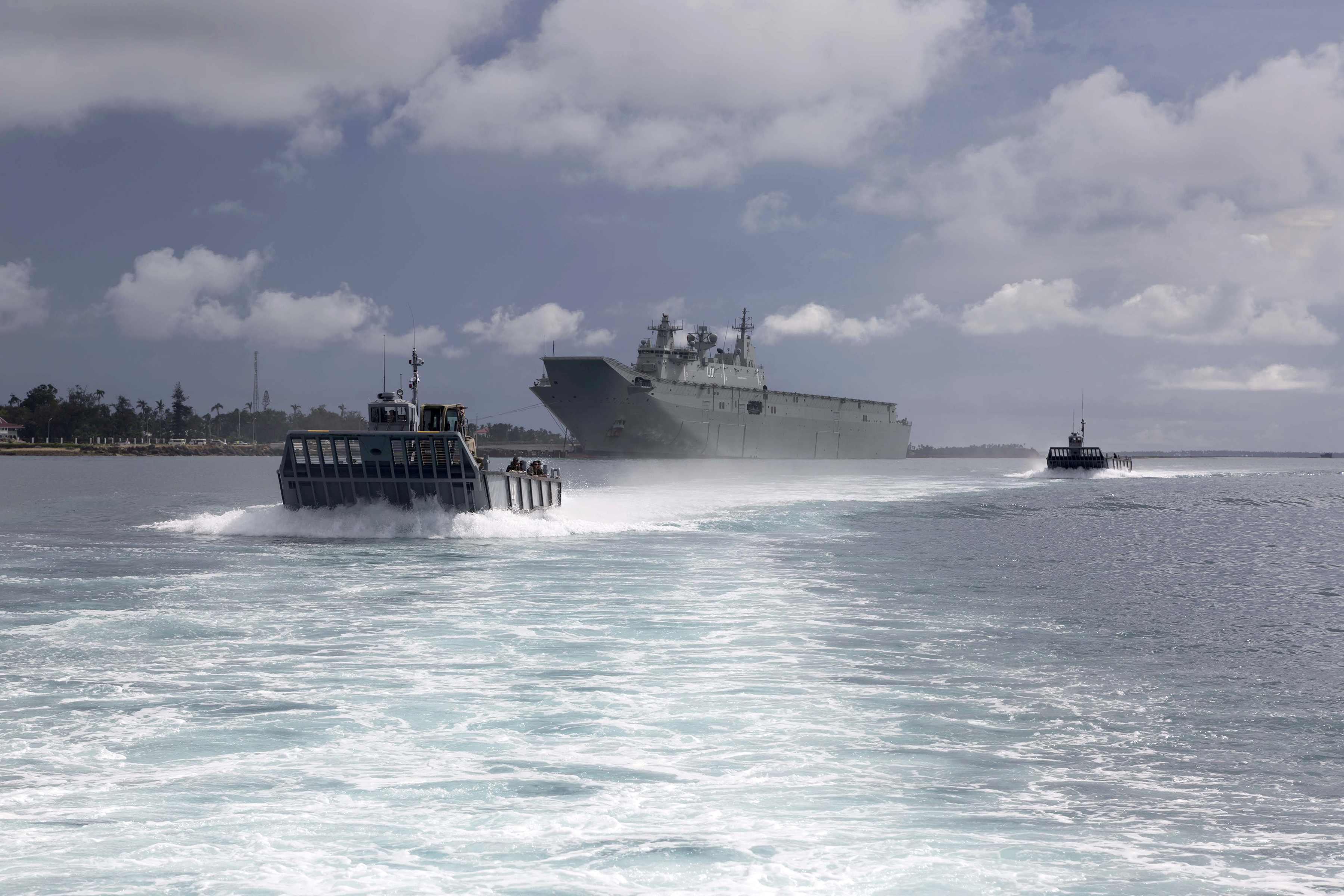
Speaking of the preference for task group deployments rather than single-ship deployments, he said, “Australia is still developing its C2 (command and control) models in this regard, and how do we manage such a large force and how we manage the expectations when we go overseas and the effects we’re doing. Clearly with bigger ships and bigger capabilities it attracts bigger events, more attention. Certainly governments have a great interest in what we’re doing and the effects we’re having – last year we had President Duterte (of the Philippines) onboard, so that’s the level we’re attracting in Manila. And the prime minister of Papua New Guinea came onboard as well, was another one – so we’re attracting heads of states where we go.”
Next year’s IPE 19 will focus on the Indian Ocean, with Canberra leading a task group to visit India, Sri Lanka, Indonesia and others. IPE 20 will return to the Southeast Asia focus, including the South China Sea, and IPE 21 would likely revert back to the Southwest Pacific like this year’s deployment.
Army’s Amphibious Forces
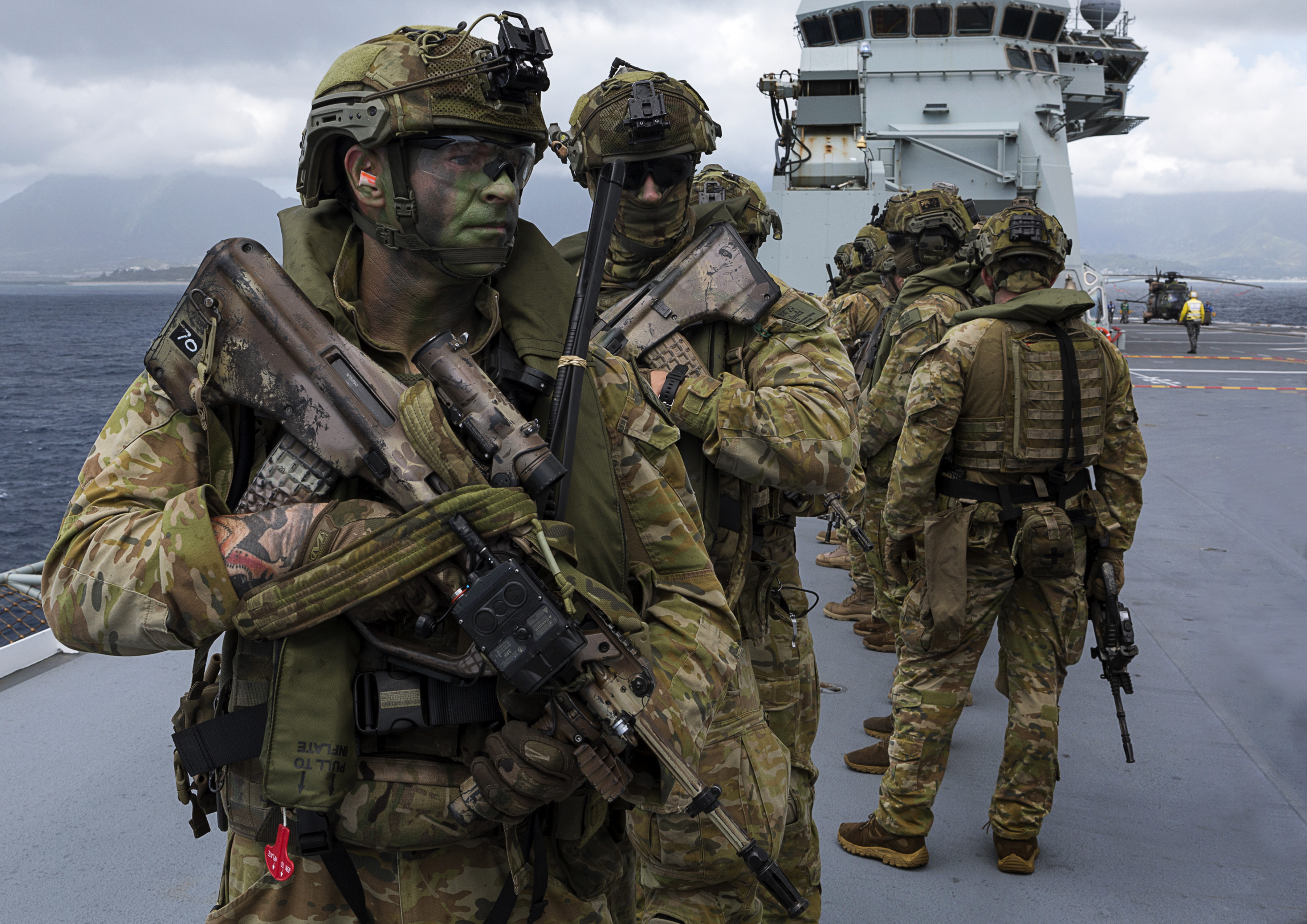
As the Royal Australian Navy’s understanding of how to operate an amphibious force in the Pacific matures, so too has the Australian Army’s vision of how to man and train the pre-landing force and ground combat element.
The Army decided early on that it would not create a new service to support amphibious operations, like the U.S. Marine Corps, but would instead devote a single battalion to specializing in amphibious operations. At the conclusion of a set of trials last year, the Army tweaked its model a bit – 2RAR (amphibious) would be the dedicated pre-landing force, and the rest of the Army’s six battalions would rotate on an annual basis who would serve as the on-call ground combat element.
“At the end of that trial … the Army decided that, okay, there’s some areas in the capability that we can take some risk in, other areas we can’t,” Lt. Col. Douglas Pashley, commanding officer of 2RAR (amphibious), told USNI News in a July 22 interview aboard Adelaide.
“And we decided we can’t take any risk in a full-time headquarters, and we need a dedicated pre-landing force organization that has specialist insertion skills and communications equipment to do what they need to do. We can, however, take some risk in general purpose infantry force. And that will have the added benefit of, as we rotate them through each of their infantry battalions, they’ll become amphibious-competent. And you get a lot of really great benefits from being able to operate in the amphibious domain.”
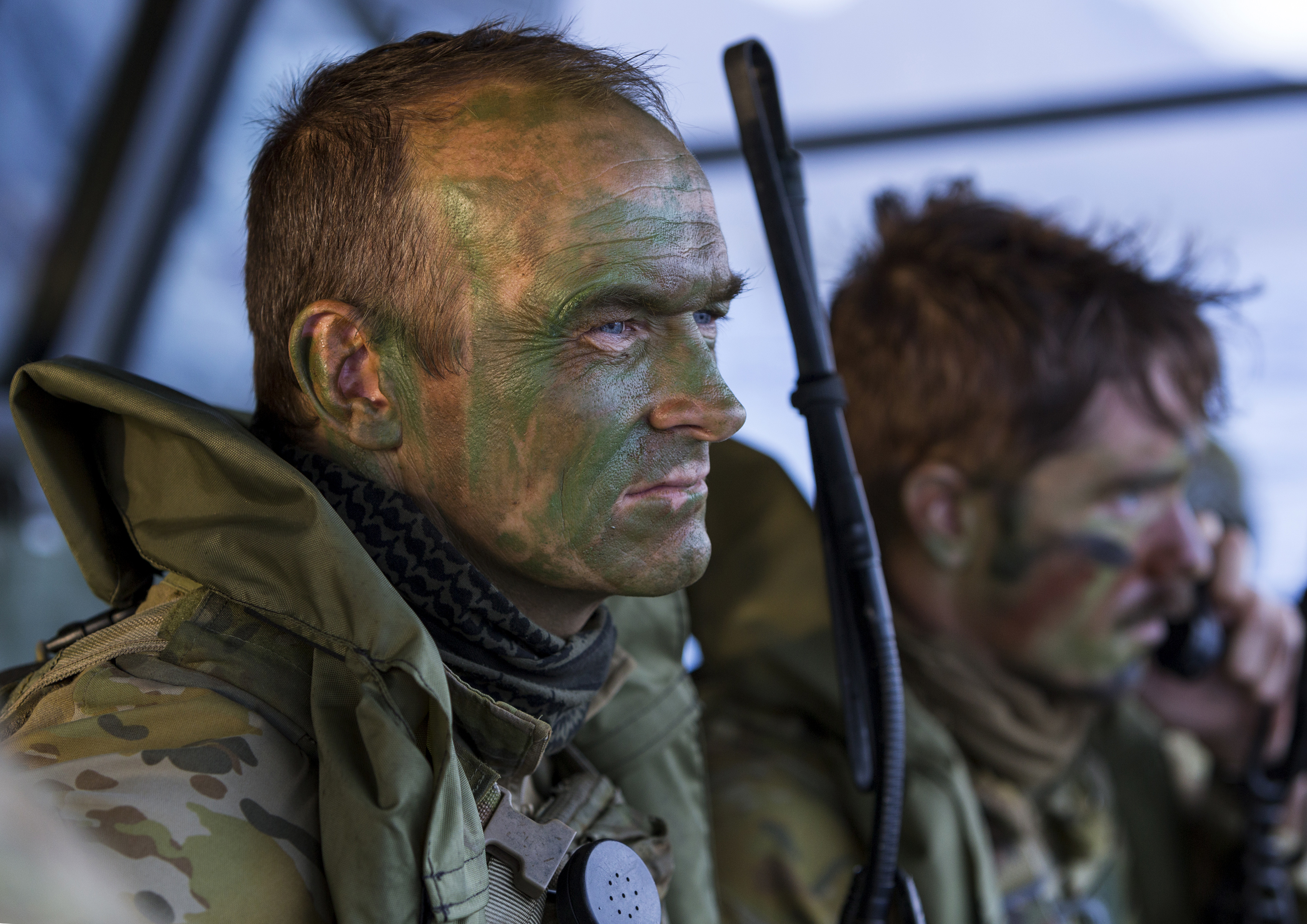
One benefit, he said, was the clarity it brought to 2RAR’s role. “We are no longer an infantry battalion that’s got a foot in two camps: being an infantry battalion and also being an amphibious trials unit. We are a specialist amphibious pre-landing force, which gives crystal-clear focus in training, equipment.”
The 350 or so soldiers of 2RAR (amphibious) are primarily infantry soldiers but also include artillery specialists, maintainers and mechanics, ordnance support personnel, snipers, small-boat operators, direct fire support personnel and more. Pashley said the force is on the smaller side, compared to other countries’ comparable amphibious forces; the Army may eventually add a few more niche capabilities, but for now he said 350 is about the right size for what Australia wants to do.
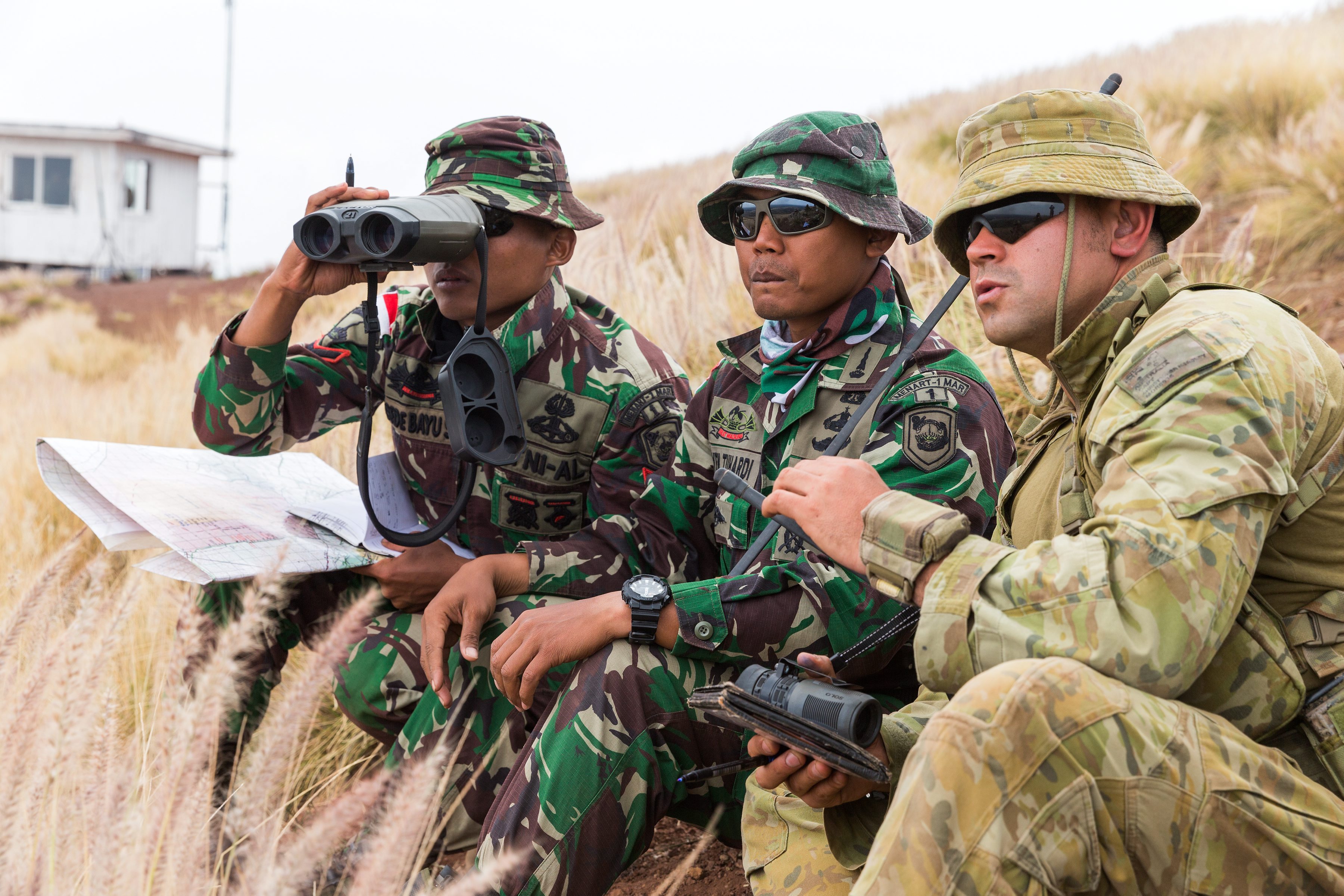
Though on a smaller scale, Pashley said his goal for 2RAR (amphibious) is to serve as something akin to the U.S. Marine Corps’ 1st Reconnaissance Battalion.
“I’m really keen to push the unit to become a world-class pre-landing force unit. The aiming mark I have set for the guys and girls in 2RAR is 1st Recon Battalion, U.S. Marine Corps. They’re an incredibly capable unit with a rich history of performance, and I think that’s what our aiming mark should be,” Pashley said, noting the unit’s attitude of setting high standards for themselves.
“I’d like to really leverage off their specialist insertion capabilities, optimized for the littoral maritime environment. I’d also like to achieve the same level of innovation and adaption that exists there; they’re constantly innovating.”
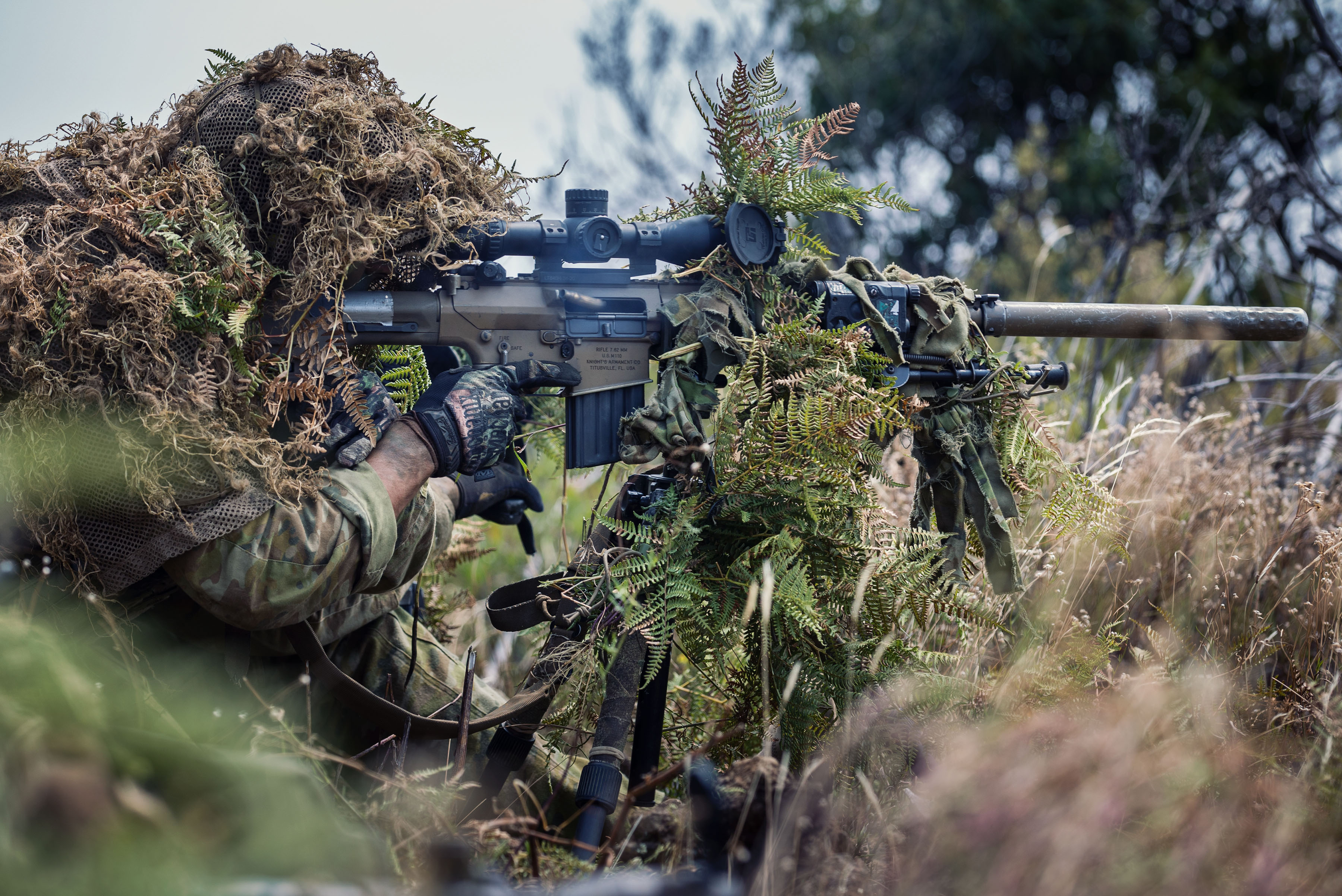
Australian Defence Force photo.
Another benefit of the refined setup is for the soldiers serving as the rotational ground combat team – similar to the U.S. Marine Corps, where units are assigned to serve as the Marine Expeditionary Unit to accompany amphibious ships.
“What I’ve seen in my short time on the job is that amphibious operations just makes you better at doing your normal job on the land, because if you can work in a multi-domain organization where you have real constraints, you have to get things right, you have to synchronize, it’s pretty easy when you go on the land,” Pashley said.
One battalion within the Royal Australian Regiment is always the “ready” force, on call to deploy on short notice if needed. The Army determined it was more sustainable to add to this list of on-call responsibilities – adding a certification event in amphibious operations so that battalion could serve as the landing force if needed – rather than ask a second battalion to also be in a ready state as a separate amphibious landing force. 8/9RAR is the current on-call landing force, and next summer 7RAR will be certified to take that role for the next year.
“I won’t be doing this job next year, unfortunately, but I am just licking my lips to see what the capability can become, when you’ve got the three amphibious ships, you’ve got a professional C2 headquarters with the amphibious task group headquarters, you’ve got a professional and dedicated pre-landing force, you’ve got a rotating [ground combat element], plus you’ve got a capable air combat element, which we’re going to take a big step with next year with the inclusion of attack aviation,” Pashley said.
Life aboard Adelaide
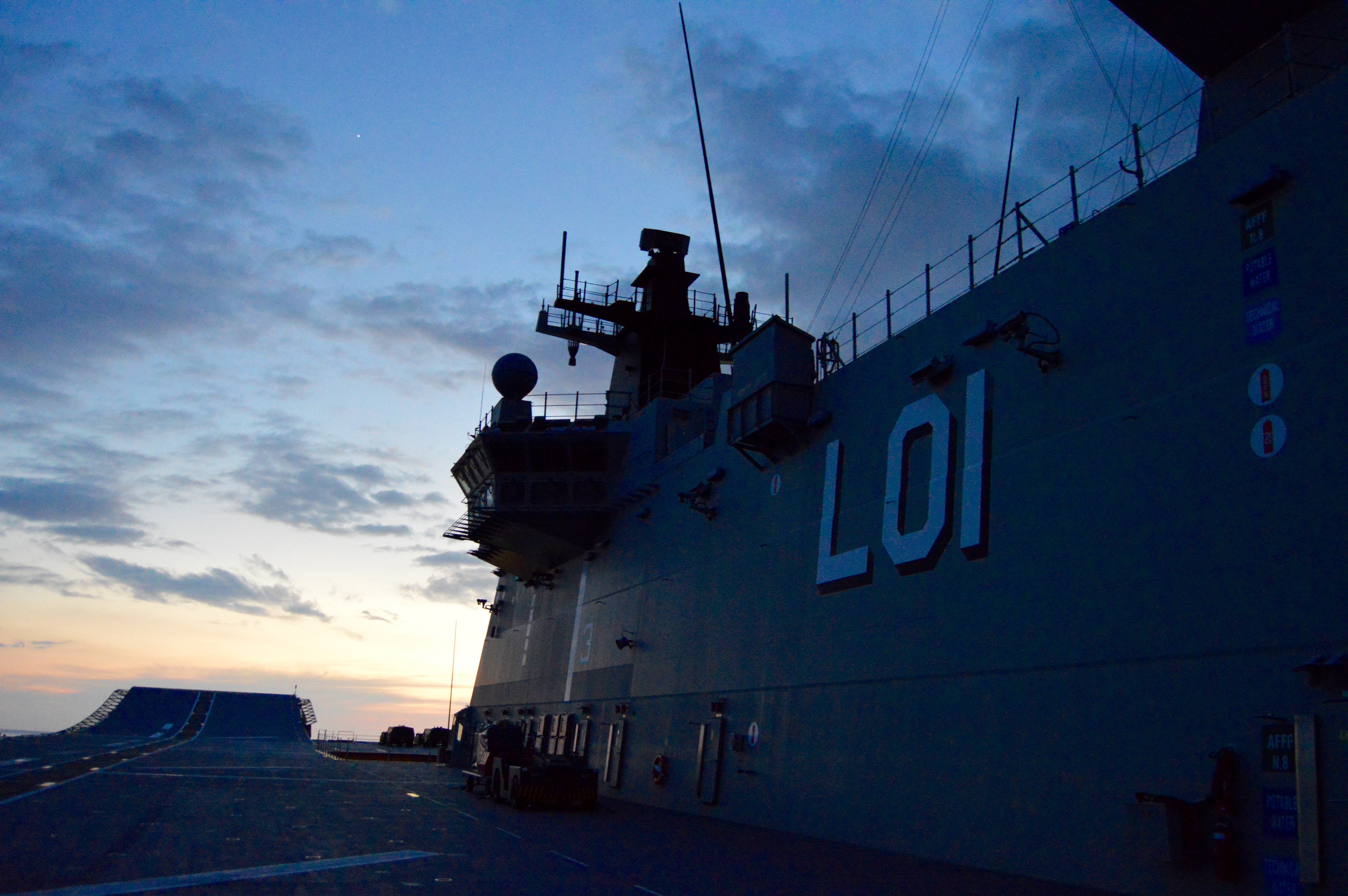
Though there had initially been some concern about the culture shock of 2RAR being the amphibious force – many of the soldiers assigned to the unit early on would have signed up for the Army expecting a traditional ground force job, and may not be happy about serving aboard a ship at sea – Pashley said his soldiers seem to like the niceties of life aboard Adelaide and sister ship Canberra.
“They would much prefer to be on a ship: planning, training, come off the ship, execute a mission or a task over two, three days, not much sleep, then come back on the ship and shower, sleep, go to the gym. So that’s an attractive promise,” he said, compared to lengthy missions on the ground at bases or remote outposts.
The soldiers serving aboard amphibious ships do get paid more, he said, but the soldiers seem to appreciate the opportunity to work with helicopters, landing craft and other assets that any other soldier would never interact with. Soldiers can request to serve in 2RAR (amphibious) through their chain of command, and Pashley said major events like RIMPAC – in addition to showing off their capability on the world stage – also serve as a good recruiting tool.
“I think we’re pretty early in our journey, so we’re really working hard to make it a place that people want to come to, to show people what we’re doing, and this exercise is really important for that,” he said.

USNI News spent about 24 hours onboard Adelaide, and the appeal of serving aboard the ship was apparent.
The 757-foot ship has accommodations for about 400 crew – about a sixth of whom are Army, the rest being Navy – and 1,000 embarked personnel for whatever mission type the ship needs to conduct. Many officers have two-person staterooms, and embarked forces stay in 15-person rooms. The two-year-old ship boasts many creature comforts not even found on American big-deck amphibs: officers eat in a dining room serviced by culinary staff that take orders from a menu and deliver food to the tables. The 23 chefs cook about 4,000 or more meals a day, and on the day the embarked forces returned to the ship after two or three weeks at an ashore training area, the chefs baked about 2,500 donuts for them as a morale-booster.
A massive wardroom boasts a tv area, meeting space, and a bar setup – most often used for coffee, with a barista coffee machine that officers joked was the most-used piece of equipment on the ship, but also for the occasional beer. (The crew clarified that, yes, beer is technically allowed on Australian warships, but may be consumed only in port at the discretion of the commanding officer. Still, the wardroom features a beer fridge decorated with cartoons about Australia’s famously deadly wildlife).
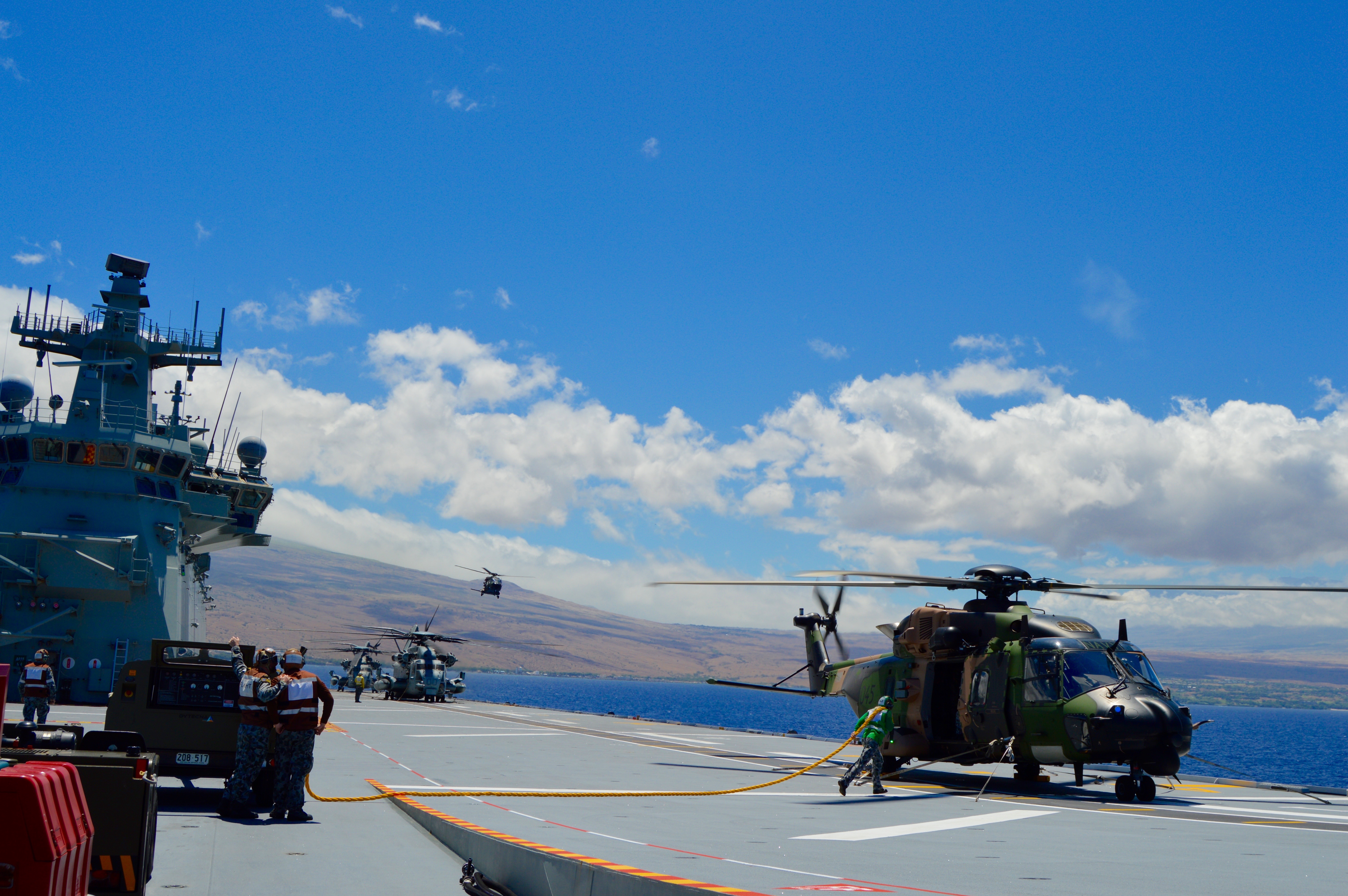
The amphib’s flight deck features six helicopter landing spots, and the hangar can store eight more. Its ski jump ramp – a remnant from Navantia’s design of the Spanish Navy’s Juan Carlos I (L61), which requires the ramp to launch AV-8B Harrier II jets – serves no practical purpose, as the Australian Defence Force currently has no plans for fixed-wing aviation operations from a ship. Personnel aboard the ship said maybe one-day operations would evolve to include fixed-wing manned or unmanned vehicles, or maybe one day the ramp would be smoothed out during a ship overhaul period. For now, since helicopters cannot land on it, the only real purpose the ramp serves is to make morning runs on the flight deck more challenging.
The ship also has a light vehicle deck that can hold upwards of 100 vehicles, as well as a heavy vehicle deck for tanks.
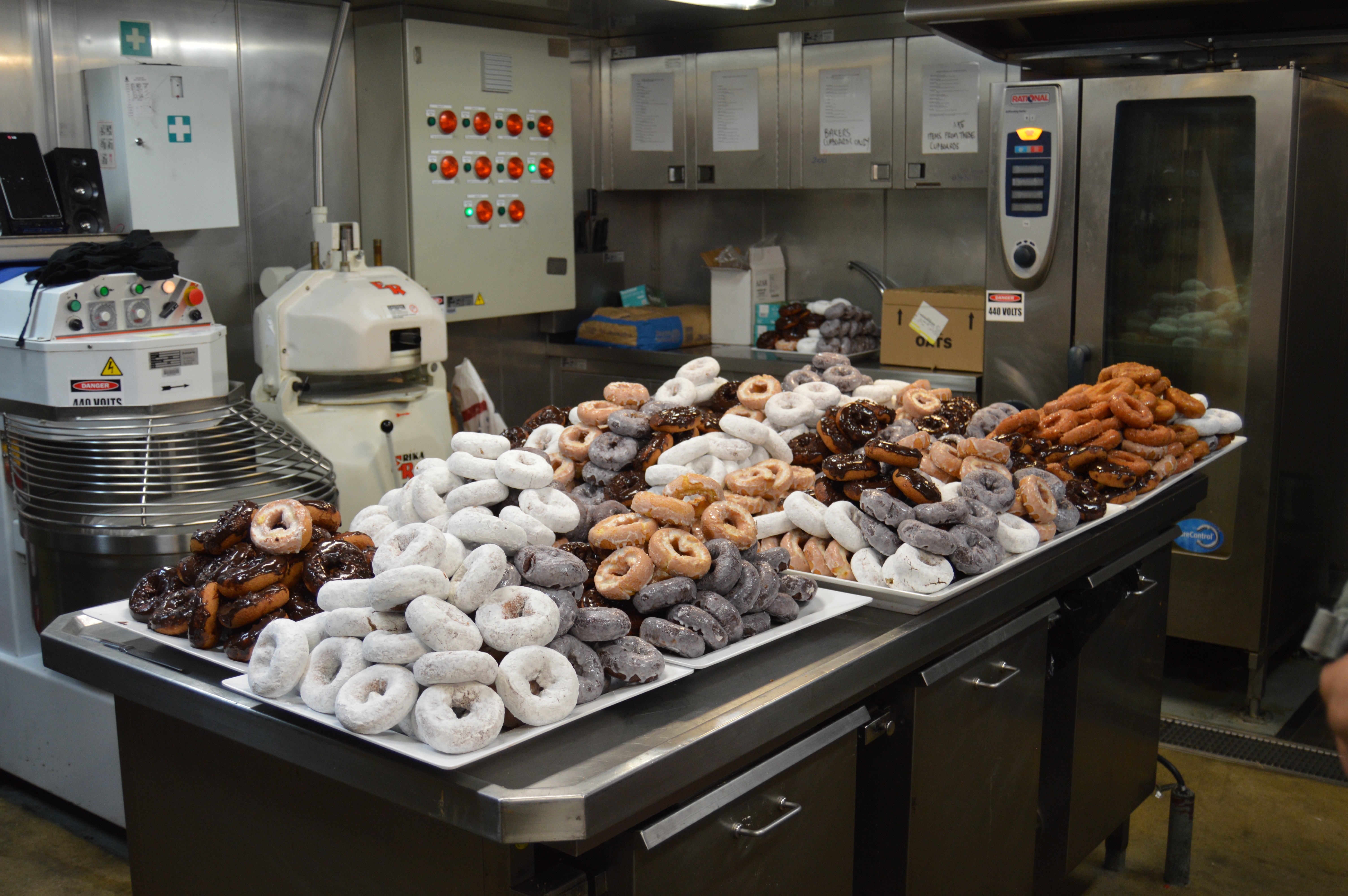
The well dock, the centerpiece of the ship’s amphibious capability, proved to be a particularly effective pairing with U.S. Marine amphibious assault vehicles, which the Australian Defence Force does not currently field. The ADF does have a Navy and Army variant of a LHD Landing Craft connector, akin to the Navy’s landing craft utility.
Also important to an amphibious mission is the ship’s medical capabilities. Whether taking care of casualties in the early stages of an amphibious assault, or – more likely – tending to victims of a natural disaster or other crisis, the ship rivals many community hospitals in Australia in terms of the sophistication of the capability, ship CO Capt. Earley said. The ship has two operating rooms, can hold 20 medium-care patients and 28 low-dependency patients, and has a dental facility, pharmacy, x-ray and radiology services and more.
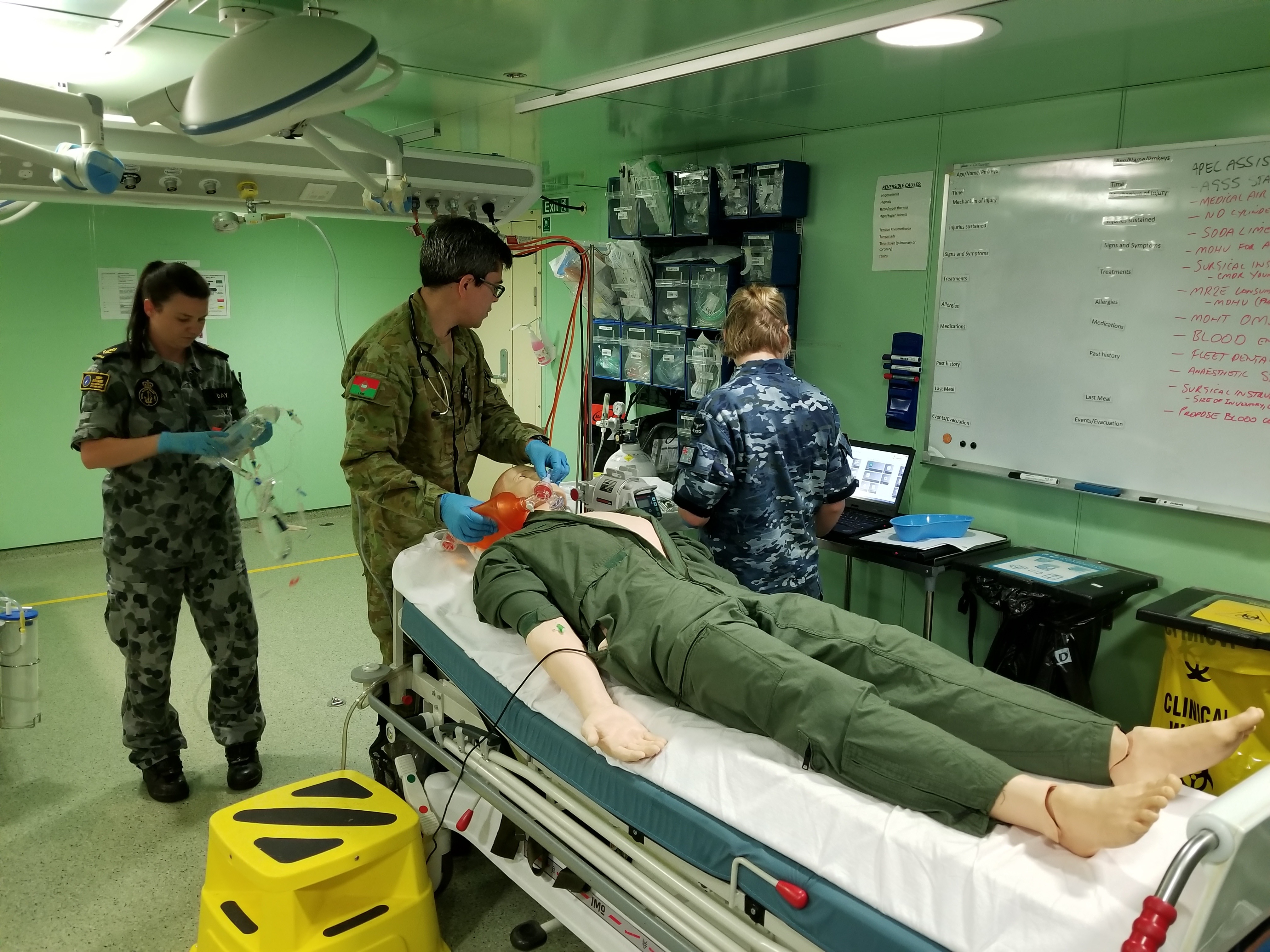
Senior Medical Officer Lt. Cmdr. Richard Classon told USNI News that “an unbridled HA/DR (humanitarian assistance/disaster relief) natural disaster” is the most likely “nightmare scenario” his medical team would face, given the region of the world they operate in. Still, because Adelaide is a warship, the medical team does train for higher-end events, too.
“If the ship did get hit by a [chemical, biological, radiological or nuclear] threat, we’ve got to be able to 1) isolate it, and 2) look after ourselves. That could be a mass casualty situation very very quickly. How do we get dirty patients into the hospital to do surgery on them?” Classon said.
“An amphibious assault could challenge us as well, because in that first phase of the operation the highest acuity patients would be occurring at that stage … and that may happen quickly, so we now have an ingressive mass casualty situation across the spectrum of trauma. So we’d have to set up a trauma station downstairs on the well dock, not ideal, or up on the flight deck if there’s multiple helicopters coming in.”





